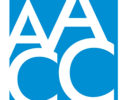Report roundup
By AACC 21st Century Center Staff
November 23, 2021
A monthly roundup of reports of interest to the community college sector.
Here are three reports to check out this month.
- New data show there is an uptick this fall among first-time nontraditional students at community colleges. Enrollment of first-time college students this fall dropped -5.3%, compared to -16.4% last fall, according to a new report from the National Student Clearinghouse (NSC) Research Center. But this fall’s declines of first-time community college students have occurred solely among traditional-age students, those 18 to 20. Enrollments for first-time students among older learners have increased, by as much as 19.2% for those over age 29. Still, community colleges have seen massive declines among all age groups of first-time students since fall 2019, from -19.8% for students older than 29, to -22.9% among students age 21 to 24.
- Enrollments of international students at U.S. colleges and universities are rebounding after dropping significantly during the pandemic – but not at community colleges, according to an Institute for International Education (IIE) report on preliminary enrollment data for this fall. Associate-degree colleges are experiencing a 10% decline, according to findings from a survey of 864 U.S. higher education institutions on current patterns in international student enrollment for fall 2021. A quarter of the surveyed colleges are associate-degree colleges. Overall, higher ed institutions this fall reported a 68% increase in the number of international students enrolling for the first time at a U.S. institution, a significant surge from the 46% decline reported in fall 2020.
- A new report from the National Association for the Education of Young Children (NAEYC) highlights the link between early childhood education (ECE) and higher education and the barriers and opportunities that exist to meeting the country’s demand for more skilled early childhood educators. NAEYC surveyed the early childhood higher education community in May. More than 600 faculty from 400 institutions responded. About two-thirds of ECE programs have experienced enrollment decreases and more than a third of programs saw a decrease in ECE candidates graduating. Thirty percent have experienced budget cuts. NAEYC then interviewed interviewed 30 higher education leaders about the current state of the ECE field and how postsecondary institutions can help strengthen the profession. Recommendations from the group included accelerating innovations in associate and bachelor’s degree alignment and student supports for ECE training programs and more accreditation of ECE degree programs.



